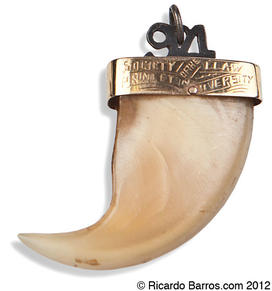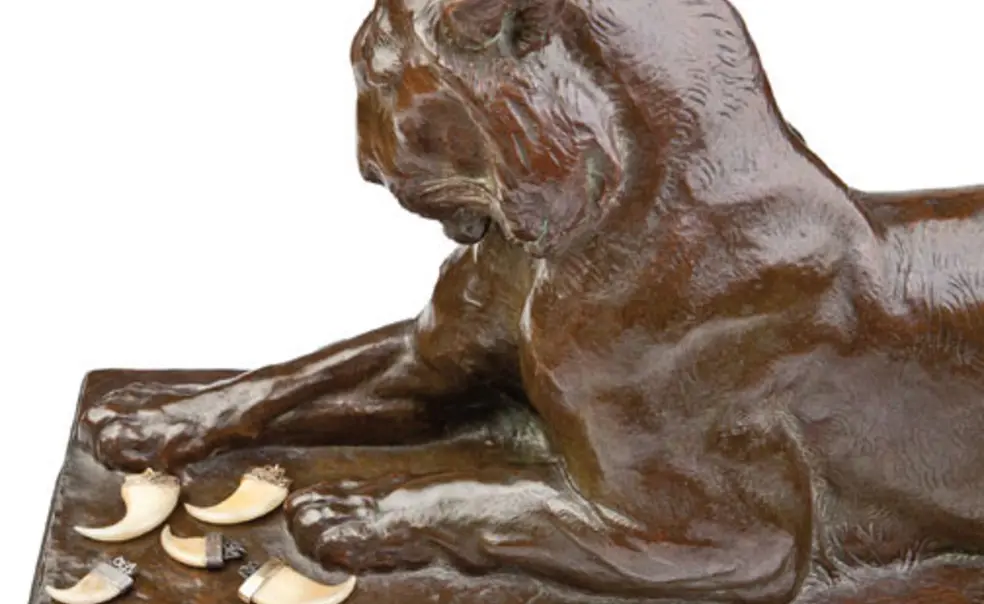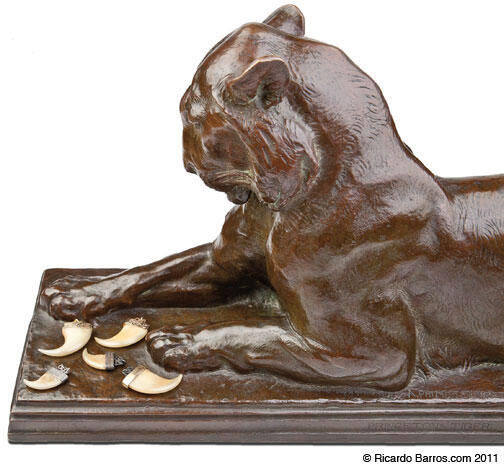From Princeton’s vault: Why tigers?

What: Founded in 1912 by the Class of 1894, the Society of the Claw honored prominent Princeton men with real claws from tigers hunted in the British Raj.
When did the tiger first become our feisty emblem? Orange and black team colors (from the House of Orange and Nassau in Holland) preceded it by several years. As late as 1879, a graduating class gave statuary lions to adorn Nassau Hall, a mistake that later needed correcting.
Nobody seems to have thought of us as Tigers until after the founding of Tiger, the humor magazine, in 1882. Its name was a play on the nonsensical “Princeton Tiger” cheer from Civil War days: “Hooray! ... Tiger! ... Sh-sh-sh-boom-ahhh!”
The Yale football team had a chance to “beard the tiger in his den,” a letter to The New York Times said in 1886, in perhaps the earliest off-campus reference.
Online newspaper databases suggest that the feline association didn’t start to become universal until 1890 – some years later than usually assumed — with the extensive coverage of the Yale game that year. “The Princeton tigers come running out on the field,” said The New York Tribune. It’s been Tigers ever since.
Where: Collection AC53, Princeton University Archives












1 Response
Smokey Williams ’42
9 Years AgoAn orange-and-black tale
Readers of the Feb. 8 issue of PAW enjoyed W. Barksdale Maynard ’88’s account of how the tiger became Princeton’s emblem. Orange and black, and all that.
However, there is a postscript to be made. The colors of the House of Orange and Nassau were actually royal blue and orange – not the choice of properly bred Tigers. So what was the origin of the orange and the black?
The accepted historical version is that the two colors began to be used together in the decade after the Civil War. But another answer was recounted to me years ago by that illustrious historian of Princetoniana, Freddy Fox ’39. According to the story that Fox told, when the seal of the new college was to be painted for the first time in 1747, the painter had a problem. New Jersey was not a rich colony. Orange presented no difficulty: Mix some yellow and red. But a deep, rich blue? “Good heavens, we don’t have that. Let’s use black instead.”
And with the selection of orange and black, the rest, as we might say, is history.